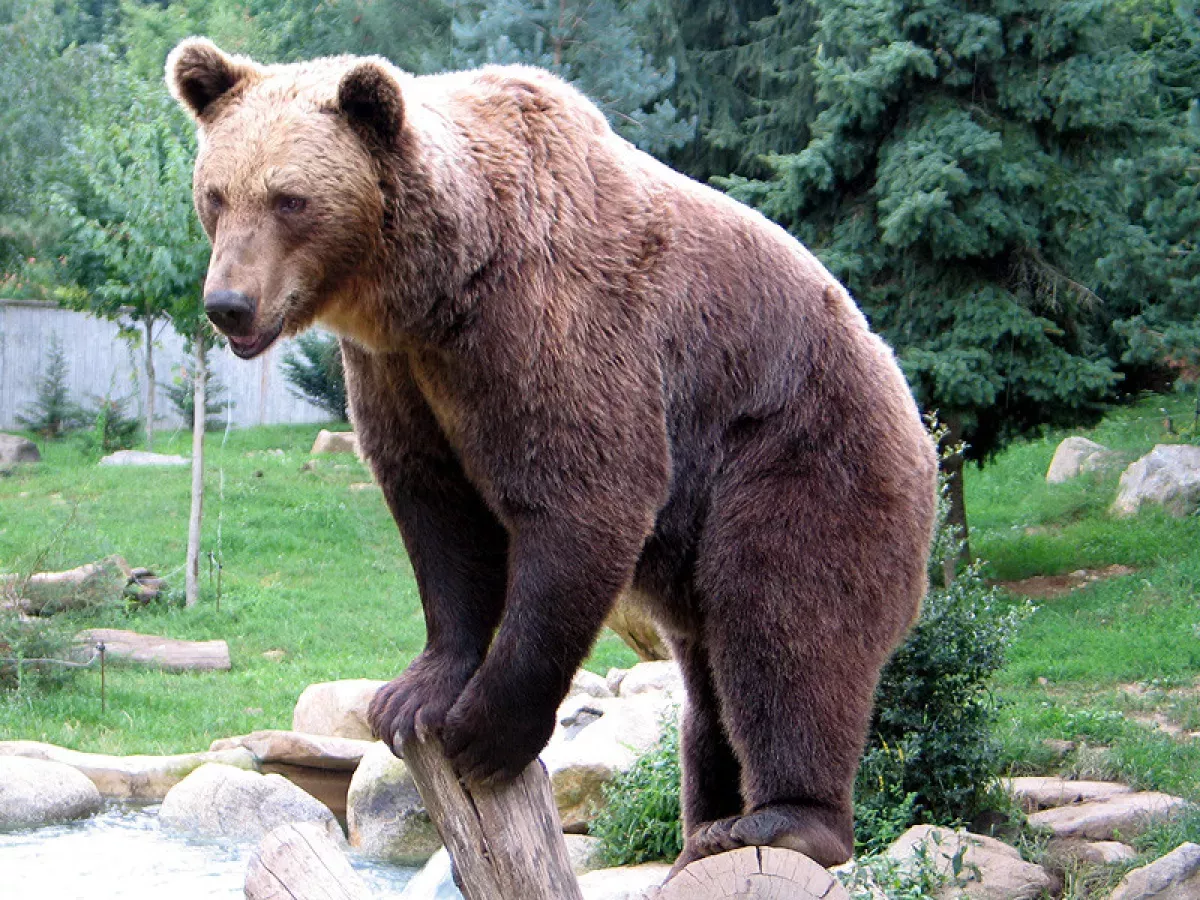Bears are carnivoran mammals belonging to the Ursidae family, classified as caniforms. While only eight species exist today, they inhabit diverse habitats across much of the Northern Hemisphere and parts of the Southern Hemisphere, including North America, South America, and Eurasia. Common traits include large, stocky bodies, long snouts, small, rounded ears, shaggy fur, plantigrade paws with non-retractile claws, and short tails.
1902: Teddy Bear Named After Theodore Roosevelt
In 1902, the teddy bear was named after American statesman Theodore Roosevelt, who refused to shoot an American black bear tied to a tree.
1918: Illustration of "The Three Bears"
In 1918, Arthur Rackham illustrated "The Three Bears", an early version of "Goldilocks and the Three Bears" originally published in 1837 by Robert Southey.
1944: Introduction of Smokey Bear
In 1944, Smokey Bear became a part of American culture, with the message "Only you can prevent forest fires".
1982: Introduction of The Care Bears
In 1982, The Care Bears began as greeting cards and were later featured as toys, on clothing, and in film.
1992: Bear Classification into Subfamilies
In 1992, McLellan and colleagues classified bears into seven subfamilies: Amphicynodontinae, Hemicyoninae, Ursavinae, Agriotheriinae, Ailuropodinae, Tremarctinae, and Ursinae.
1997: Ursoidea Superfamily Classification
In 1997, McKenna et al. classified the bear species into the superfamily Ursoidea, with Hemicyoninae and Agriotheriinae being classified in the family "Hemicyonidae".
2005: Phylogenetic tree analysis
In 2005, Flynn's molecular phylogenetic analysis of six genes established the relationship of the bear family with other carnivorans.
2005: Classification of Ursidae in Caniformia
In 2005, Wesley-Hunt and Flynn classified the family Ursidae as one of nine families in the suborder Caniformia, or "doglike" carnivorans, within the order Carnivora.
2006: UNESCO World Heritage Site Designation
In 2006, the Sichuan Giant Panda Sanctuaries, home to around 30% of the wild panda population, gained a UNESCO World Heritage Site designation.
2007: Mitochondrial DNA Sequence Phylogeny
In 2007, a phylogeny based on complete mitochondrial DNA sequences from Yu et al. showed that the polar bear and the brown bear form a close grouping, but the relationships of the other species are not well resolved.
2017: Genetic Study of Ursine Bears
In 2017, a genetic study by Kumar et al. concluded that Ursine bears originated around five million years ago, and there has been extensive hybridization among the different species.
2018: Musteloids updated after multigene analysis
In 2018, the musteloids were updated following Law et al.'s multigene analysis, which contributed to the understanding of the bear family's relationship with other carnivorans.
Trending

11 days ago McDavid and Draisaitl approach Gretzky's level, featuring in NHL's November top plays.

1 month ago Finn Wolfhard Teases 'Stranger Things' Finale: Bigger Than Imagined, Comparing It to Breaking Bad

7 months ago Charlie Sheen's 'Two and a Half Men' ending explained, 'Top Gun' spoof returns to streaming.

2 months ago Andy Cohen's Son Ben Hates Elsa; Kristen Bell Reacts to the Frozen Opinion.

1 month ago Supreme Court's potential strike down of Trump's tariffs raises concerns about further economic measures.

1 month ago Martha Stewart's Holiday Collection Returns for 2025: Decor and Dining Favorites!
Popular

Candace Owens is an American conservative political commentator and author...

Ilhan Omar is an American politician currently serving as the...

XXXTentacion born Jahseh Dwayne Ricardo Onfroy was a controversial yet...

Charles James Charlie Kirk was a prominent American right-wing political...

Frederick Christ Trump Sr - was an American real estate...

Bill Gates an American businessman and philanthropist revolutionized personal computing...
